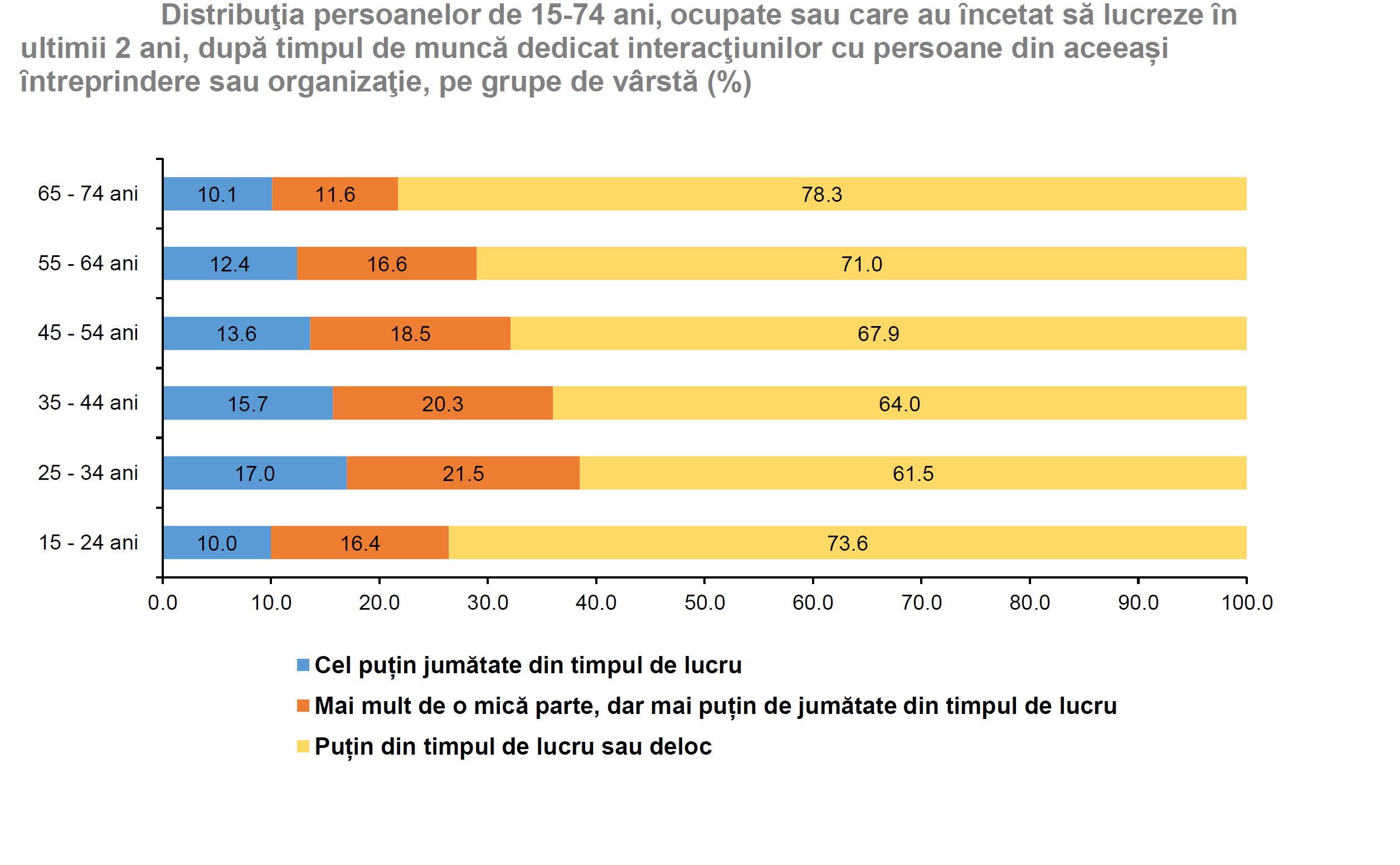
About two-thirds (66.3%) of the roughly 8.2 million respondents to a survey by the National Institute for Statistics say they use “little or none of their work time” to communicate with colleagues at the company they work for. And the readiness to communicate depends very much on the age group.
The INS also measured the extent to which digital devices are used at work, and the results were also somewhat surprising
Conversations with colleagues: young people are the most silent
The share of those who indicated that they interact with other people in the organization at least half of their working time gradually decreased from 17.0% in the 25-34 age group to 10.1% in the 65-74 age group.
However, it should be emphasized that the very young (age group 15-24) communicate the least, their share is only 10.0%.
29.5% of those with a college degree said they spend at least half of their time at work communicating with other people in the company about work issues. For people with secondary education, the weight decreases to 11.5%, for those with a low level of education – to 3.7%.
Employers communicate the most with other people in the organization, with 37.1% doing so at least half the time, compared to 15.8% of employees, 4.6% of self-employed workers and 2.9% of unpaid family workers.

Interaction with people outside the company
About a fifth of respondents (20.4%) spend at least half of their working time communicating with people outside the company or organization in which they work (customers, suppliers, patients, students, etc.).
Most of them (66.0%) do not use any or very little of their work time for this purpose, according to the INS.
The share of women is twice as large as men, one of the explanations is that in some professions (health care, education) the number of women workers is much higher than men.
More than a quarter (26.6%) of people aged 25-34 spend at least half of their working time communicating with people outside the company/organization. With increasing age, there is a gradual decrease of this type of interaction, reaching 15.2% at the age of 55-64. Among young people aged 15-24, the share was 18.0%.
Employers communicate the most outside the organization, with 42.2% saying they spend at least half of their working time communicating with people outside the organization, compared to 21.9% of employees, 10.7% of self-employed contractors and 2.8% of unpaid family workers. employees .
Digital devices at work – three quarters of respondents say they don’t use them
About 73% of respondents claim that they do not use digital devices at all for professional purposes or use them only to a small extent during working hours.
Differences by education level are significant, with 58.6% of people with a university degree using digital devices at least half of their working time, compared to 10.6% with a secondary education and only 0.8% with a low level of education.
Administrative staff use digital devices the most at work, with almost two-thirds (64.2%) of them using them for at least half of their working time

Some questions in the module asked about time spent using digital devices, i.e. computer, tablet or mobile phone (excluding non-video phone calls) to measure the use of digital technology for occupational purposes.
These included browsing the web, reading and writing e-mails or messages, video conferencing or calling, and working with word processors, spreadsheets, or presentation programs.
One-fifth (20.0%) of respondents said they spend at least half of their working time using digital devices for work-related purposes.
The answer option “at least half the working time” was more common among women (26.9%) than among men (15.0%), according to the INS.
By age group, people aged 25-34 years who spend at least half of their working time working with digital devices were most often mentioned (27.7%), followed by people in the age group 35-44 years old (23.2%). In other age groups, the shares are lower than 20.0%.
Differences by education level are significant, with 58.6% of people with a university degree using digital devices at least half of their working time, compared to 10.6% with a secondary education and only 0.8% with a low level of education.
As for those with a secondary level of education, 22.3% of those with a higher education performed their work duties using digital devices at least half of their working time. The share was 13.0% for high school graduates and 2.3% for graduates of professional, additional or apprenticeship education.
Employers were most likely to say they use digital devices at least half of their working time (40.4%), compared to 22.2% of employees, 5.3% of self-employed workers and 0.3% of unpaid family workers.
Administrative officials use digital devices the most at work, with almost two-thirds (64.2%) of them using them for at least half of their working time.
Source: Hot News
Lori Barajas is an accomplished journalist, known for her insightful and thought-provoking writing on economy. She currently works as a writer at 247 news reel. With a passion for understanding the economy, Lori’s writing delves deep into the financial issues that matter most, providing readers with a unique perspective on current events.